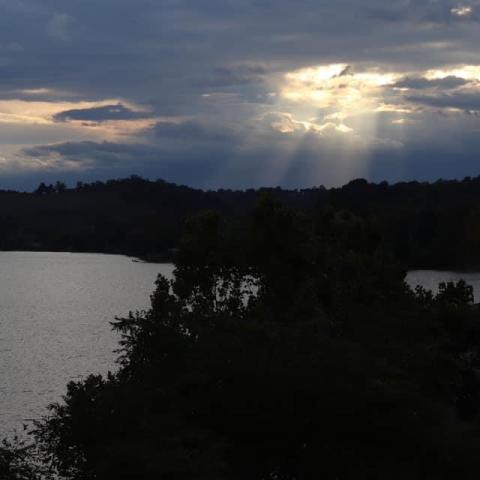
Parkersburg, West Virginia
Photo Credit: Jenna Pierson
By Jenna Pierson, Social Media Strategist, Office of Research Operations & Planning
When my father was diagnosed with end-stage-3 rectal cancer in the spring of 2018, it was understandably a time ridden with anxiety and fear. Those are feelings that are nearly universal for cancer patients and their loved ones as they begin to process next steps.
For many who are coming to terms with their diagnosis, additional stressors begin to quickly crop up. Financial, physical and emotional strains are just a few facets. For those who live in rural areas, the question of adequate access to even the most standard forms of treatment can be thrown into question.
Fortunately for my father, we found ourselves in a part of Appalachia that has access to standard treatment. However, for thousands of others who are sprinkled throughout this region of the country, this may not be the reality. Many don’t even have reliable access or adequate knowledge of general healthcare services and screenings. The reasons are complex and multifaceted.
In a 2017 piece, Electra Paskett, Ph.D., wrote to the National Cancer Institute that her research on cancer disparities at The Ohio State University College of Medicine had revealed that “In the Appalachian areas of Ohio, Kentucky, Pennsylvania, Virginia, and West Virginia, the rates of lung, cervical, and colorectal cancer incidence and mortality are higher than anywhere else in the United States.”
To affirm her findings further, in a 2021 report from the Appalachian Regional Commission, the cancer mortality rate was cited as being 184 per 100,000 people. That’s 10% higher than the national rate and, depending on what part of Appalachia you live in, it can soar to nearly 40%.
I have loved ones who live in the depths of rural West Virginia. It’s a beautiful place and visiting reminds me of the rich love and heritage I have within my familial roots. It also reminds me of the hardships that my mountaineers have gone through and the resilience we continue to cultivate. For many, it is home. Why should they have to sacrifice this to increase their chance of living? Can they even consider sacrificing this? More importantly – do we really believe they should?
It’s mind-boggling to think that my father’s outcome could have been drastically different if we were mere miles in other directions throughout our region.
For those of lower socioeconomic status, geographic placement truly can mean the difference between life and death. Choosing between feeding your children and having enough money for gas to get to a hospital dozens of miles away is a very raw reality. This doesn’t even factor in the question of health insurance.
I do feel encouraged by recent advancements that have taken place. The National Cancer Plan has many tangible goals, one of which is to eliminate inequities when it comes to populations that have historically had reduced access to treatment and research opportunities. This means that we envision a future where regardless of your race, sexual orientation, gender identity, age, location and more, you will have access to therapeutic treatments and hopefully remission.
This sort of progress will require conversations. It will require funding. It will require passion, and most of all, it will require people who care and strive to make a difference.
To read more about what the National Cancer Institute is doing to confront these barriers and statistics, check out this blog on cancer rates for rural women: https://www.cancer.gov/news-events/cancer-currents-blog/2023/improving-cancer-screening-rural-women.
Aligned is a blog written by the Center for Cancer Research's (CCR) Office of Cancer Research Capacity Building discussing workplace engagement and highlighting various ways we can all be more involved in creating a more successful scientific workforce.